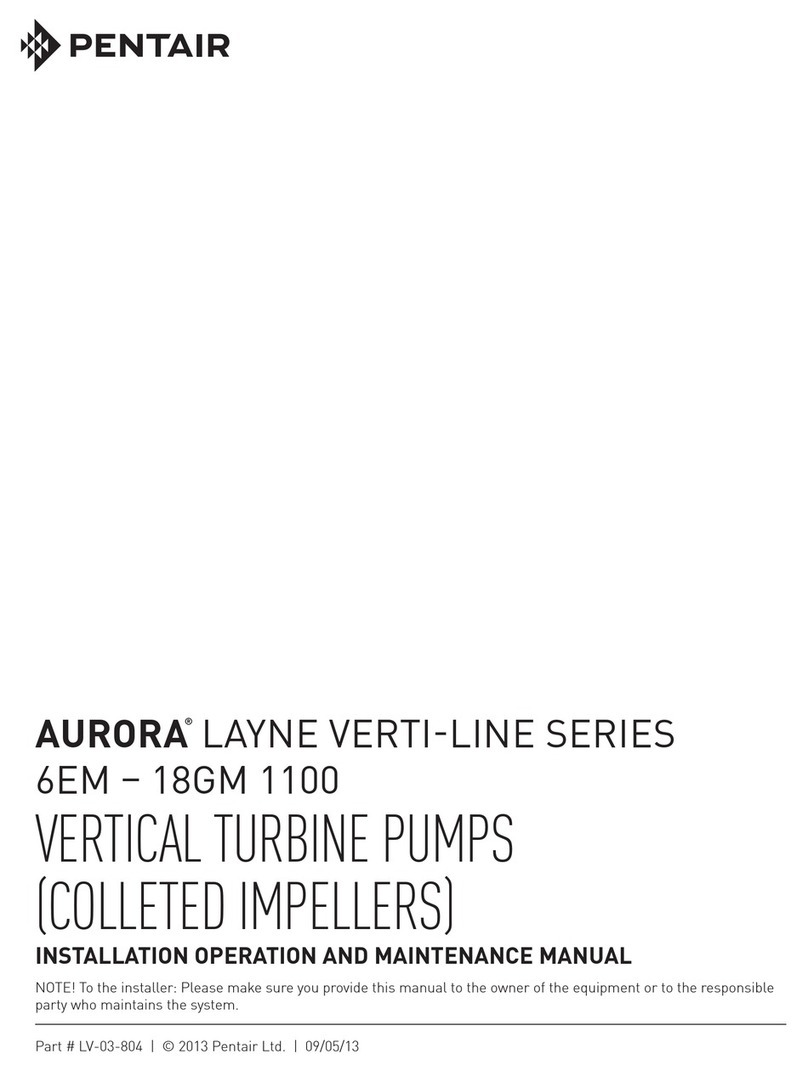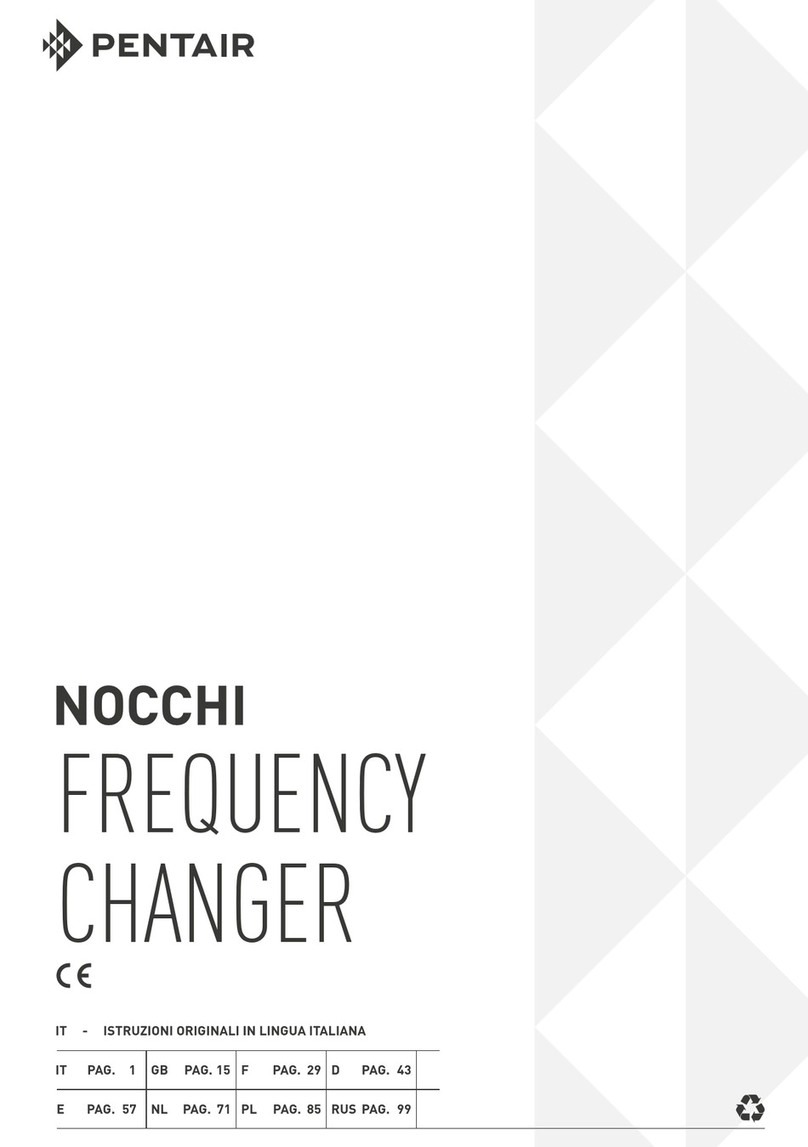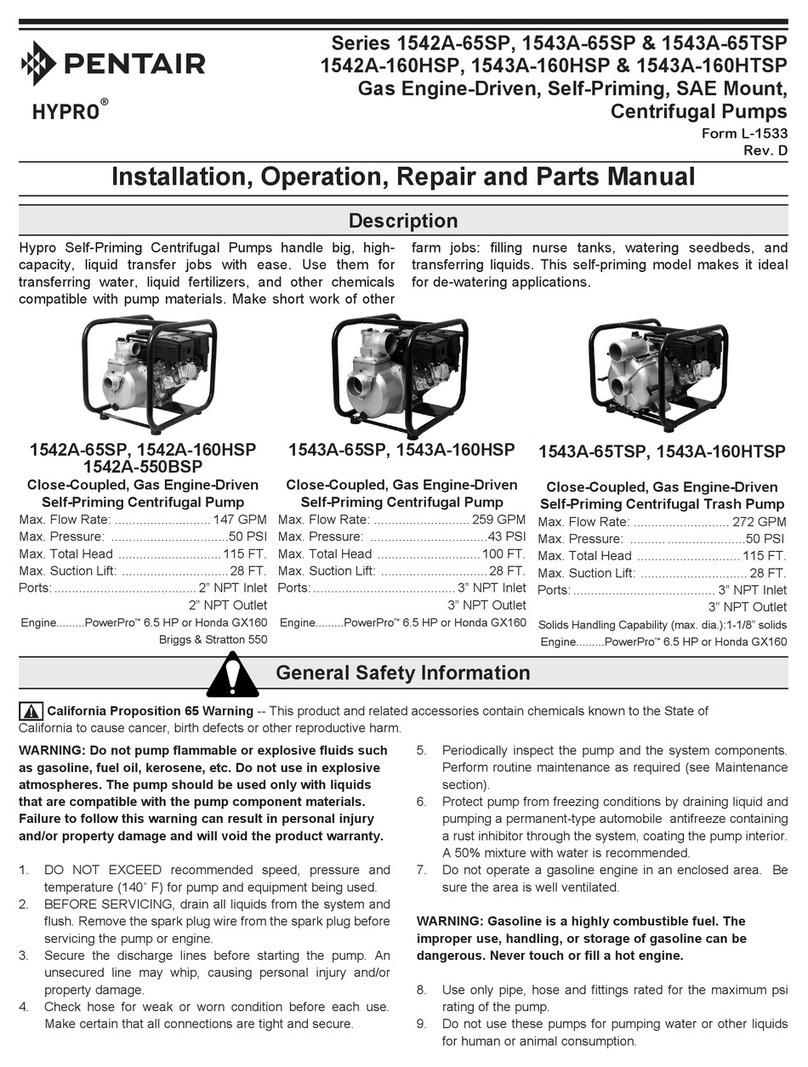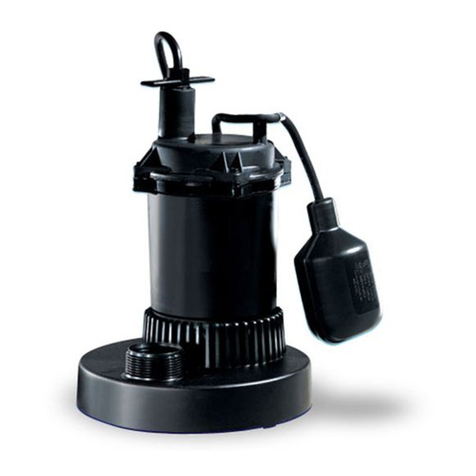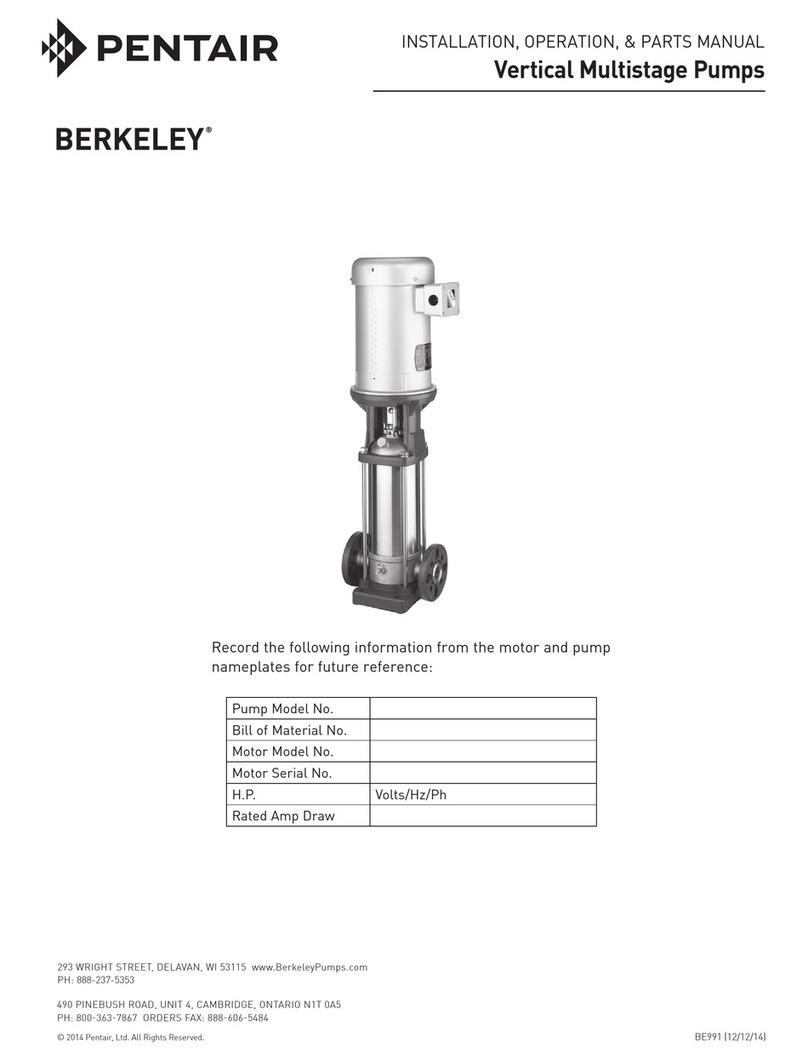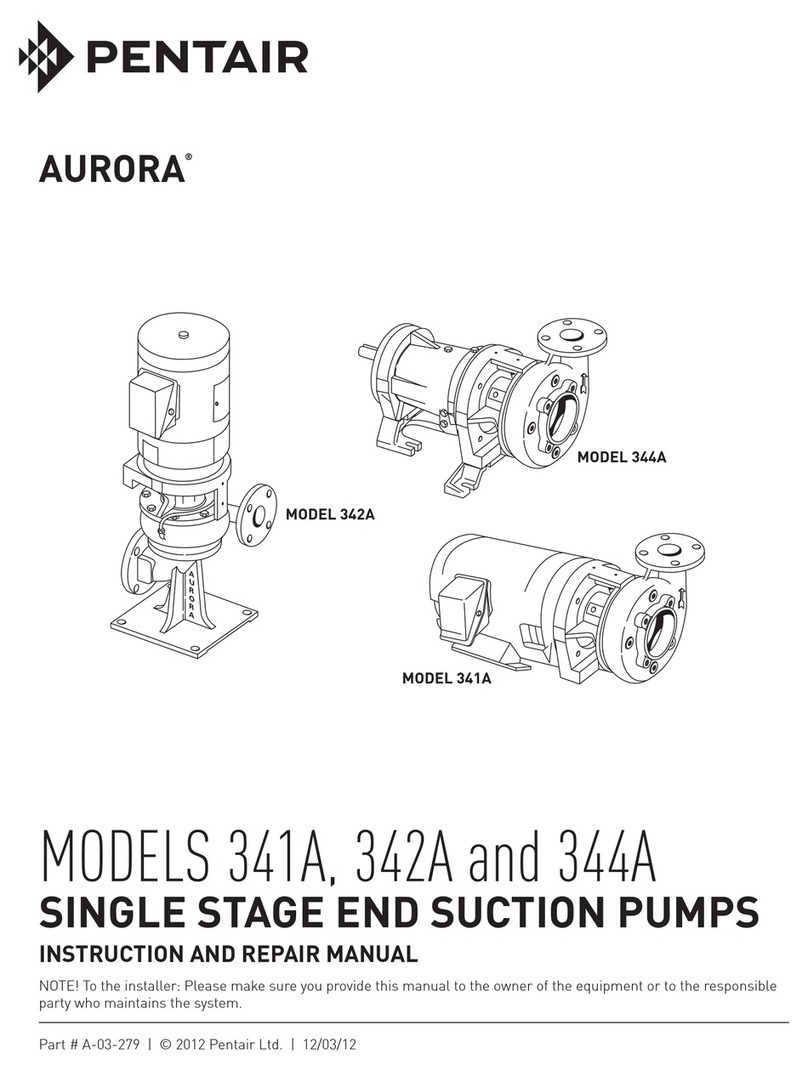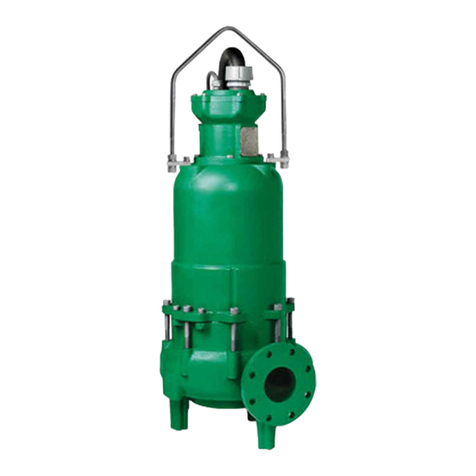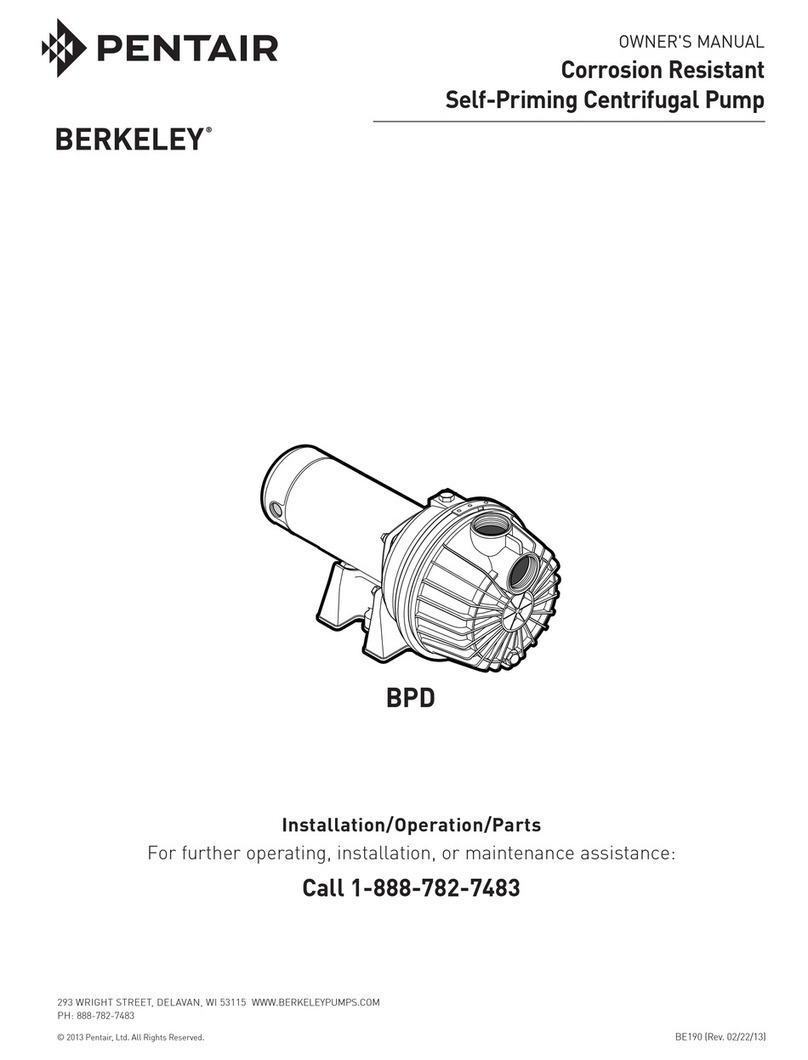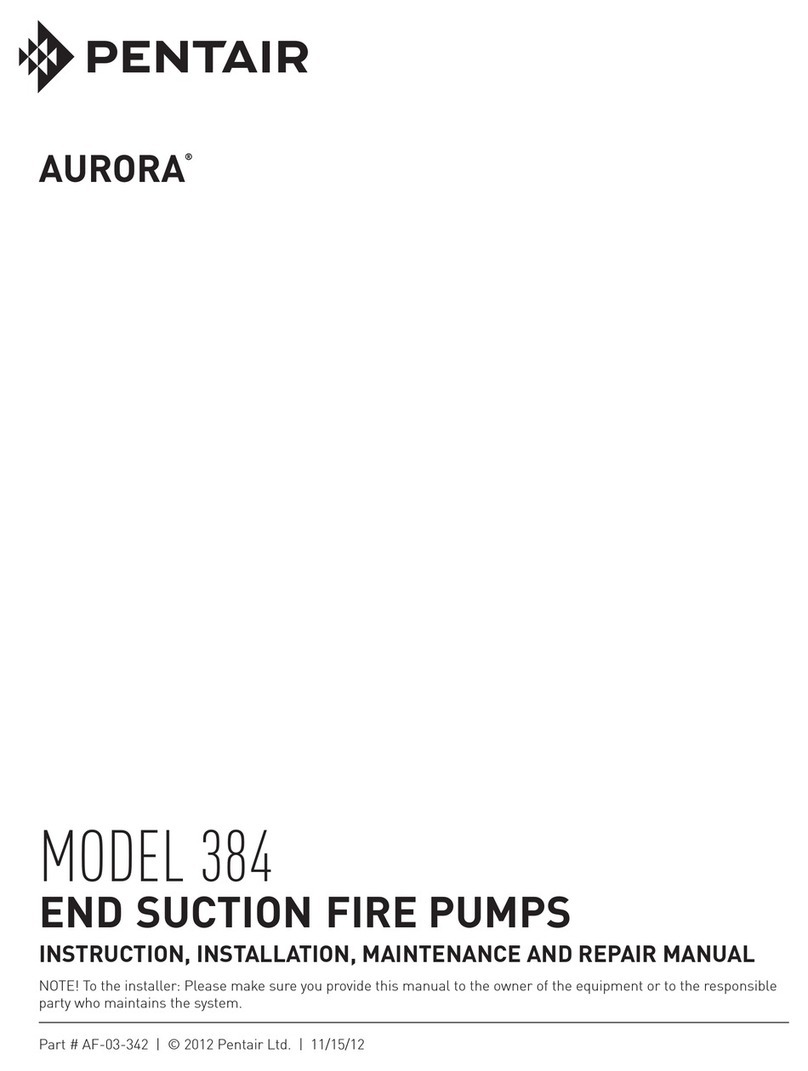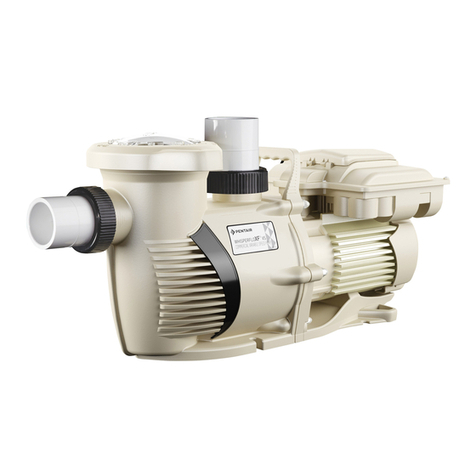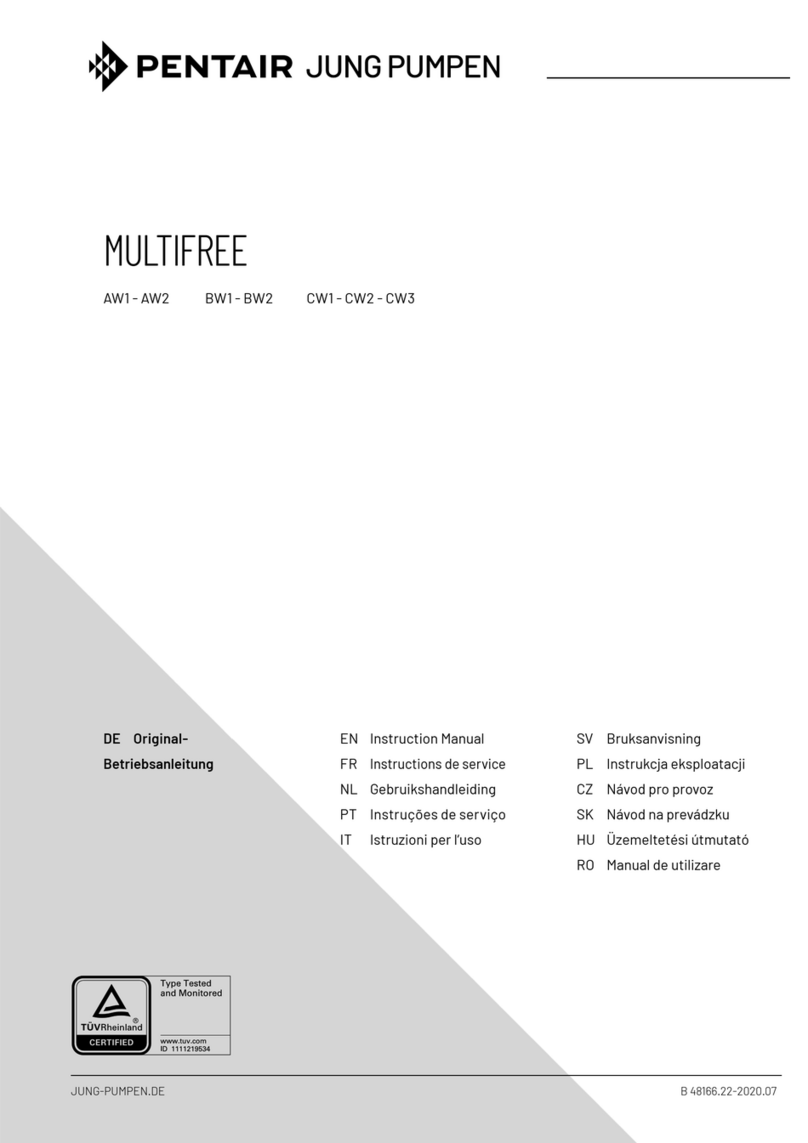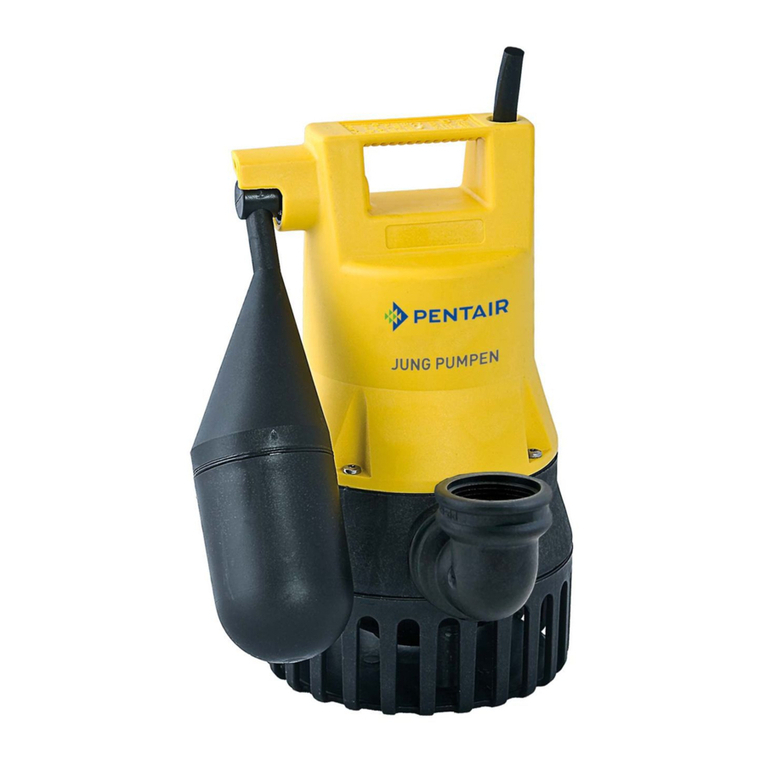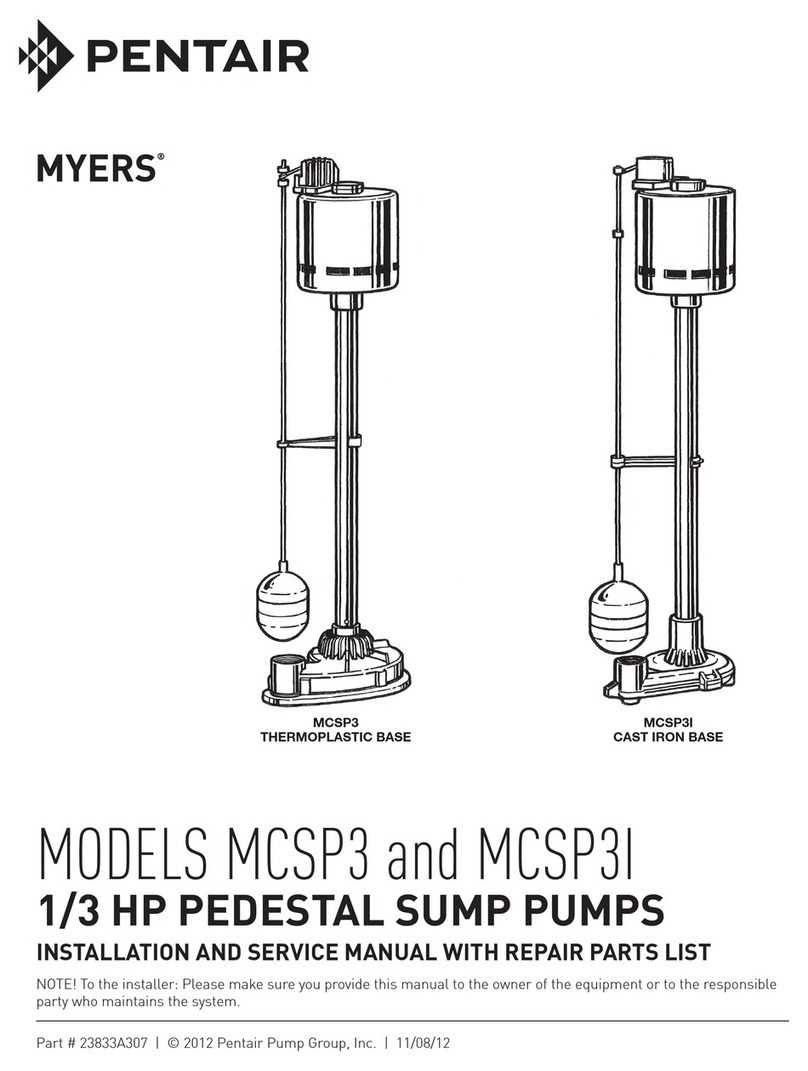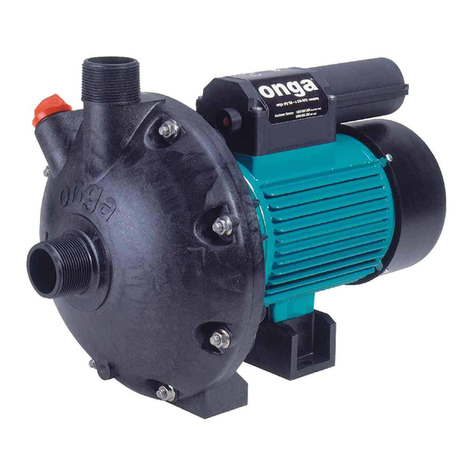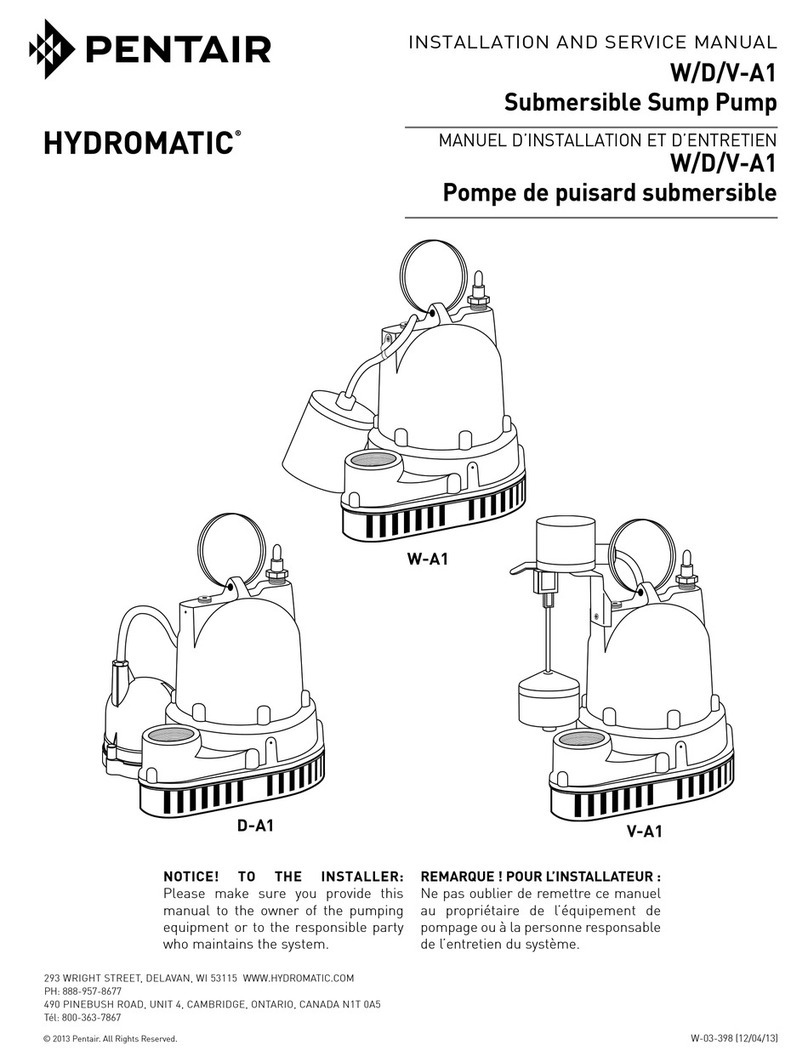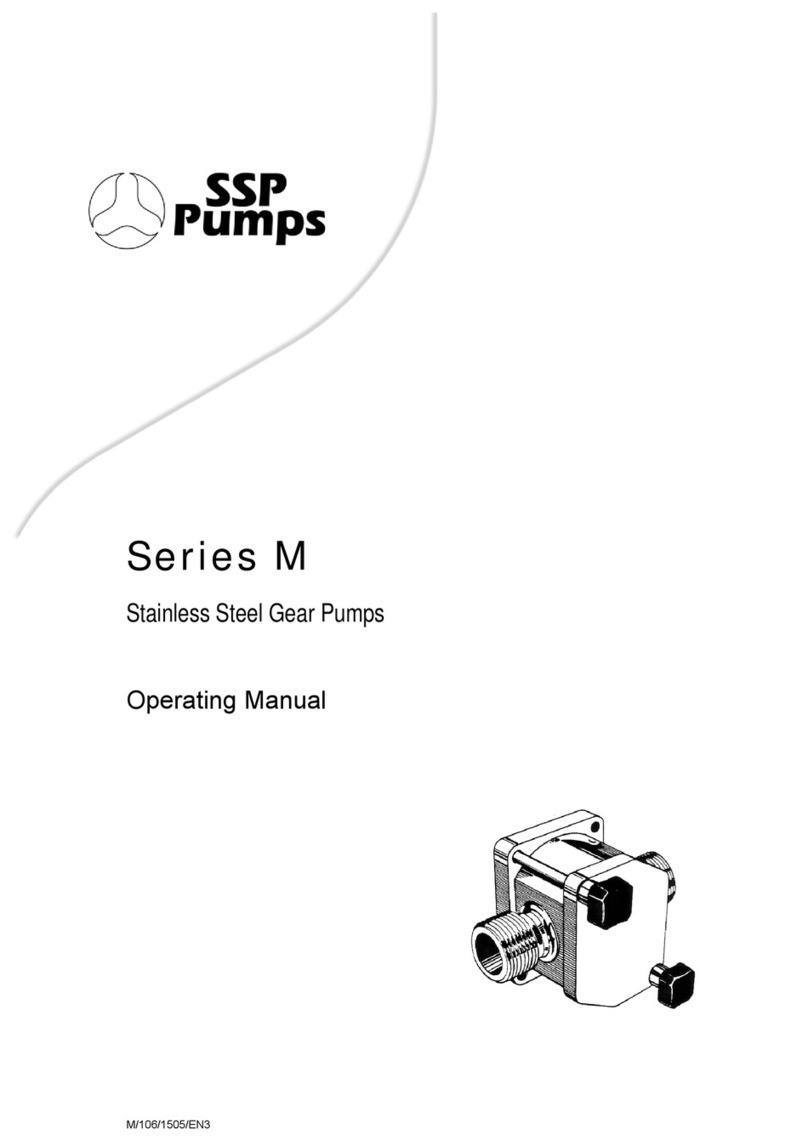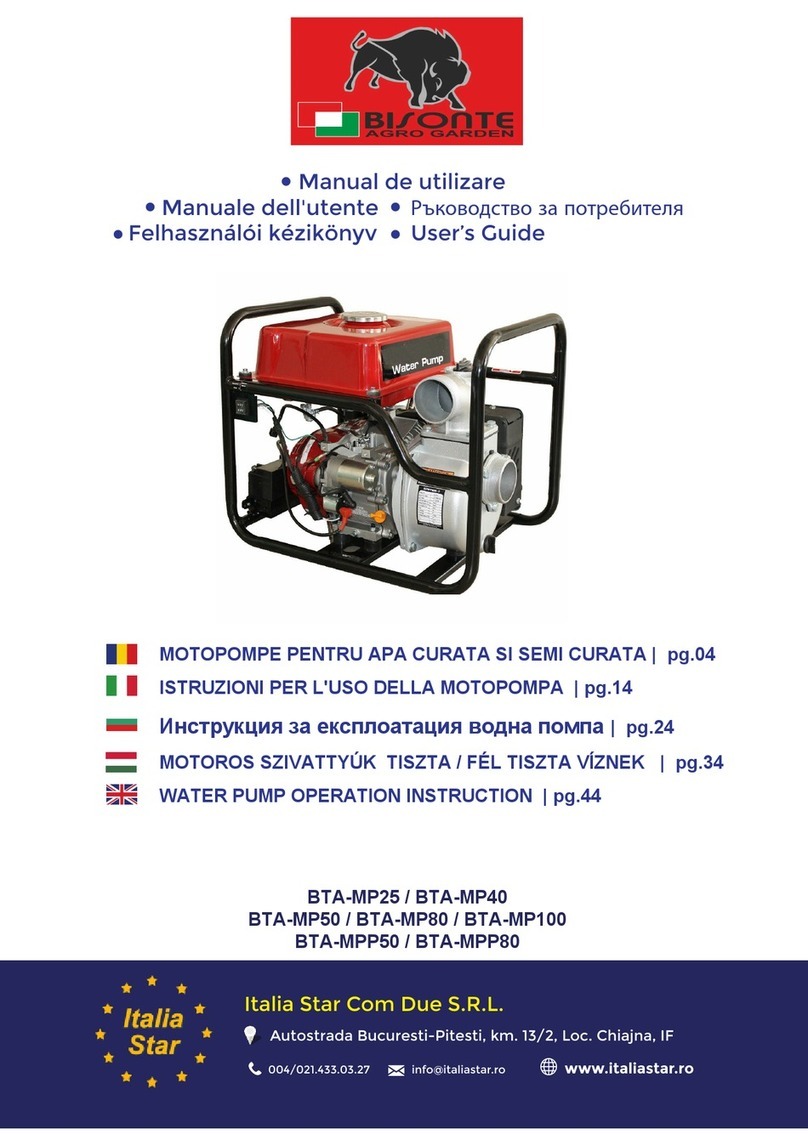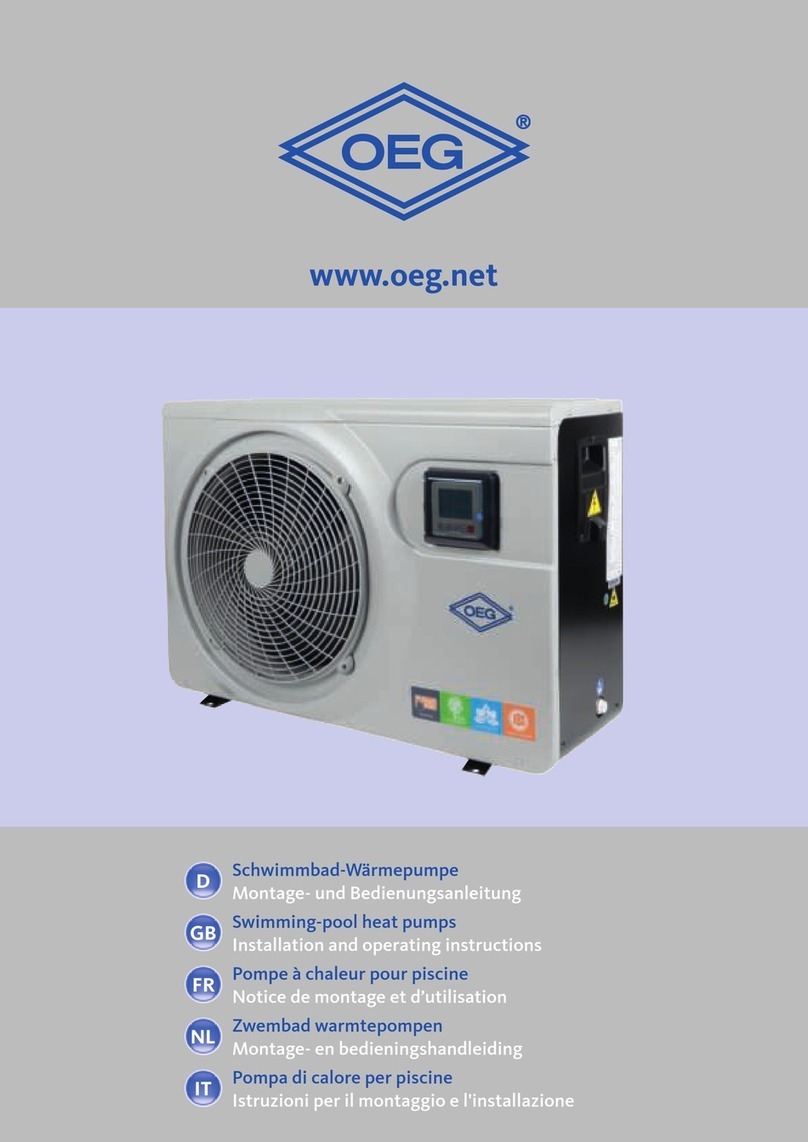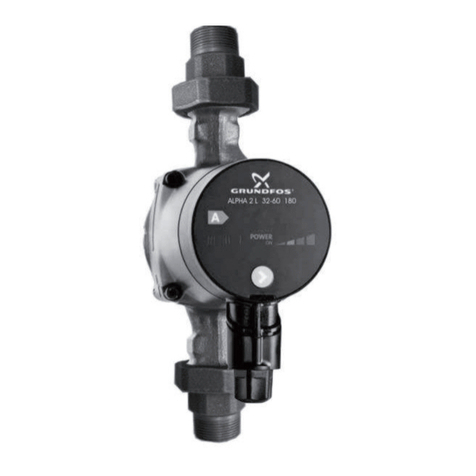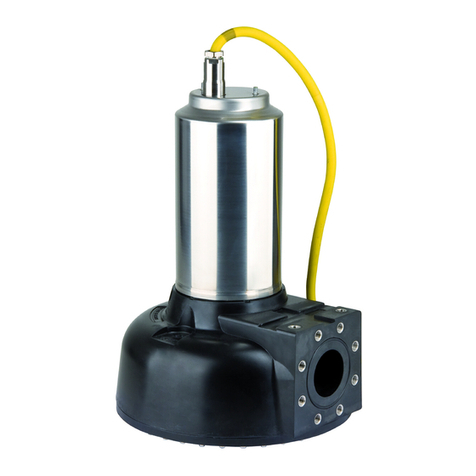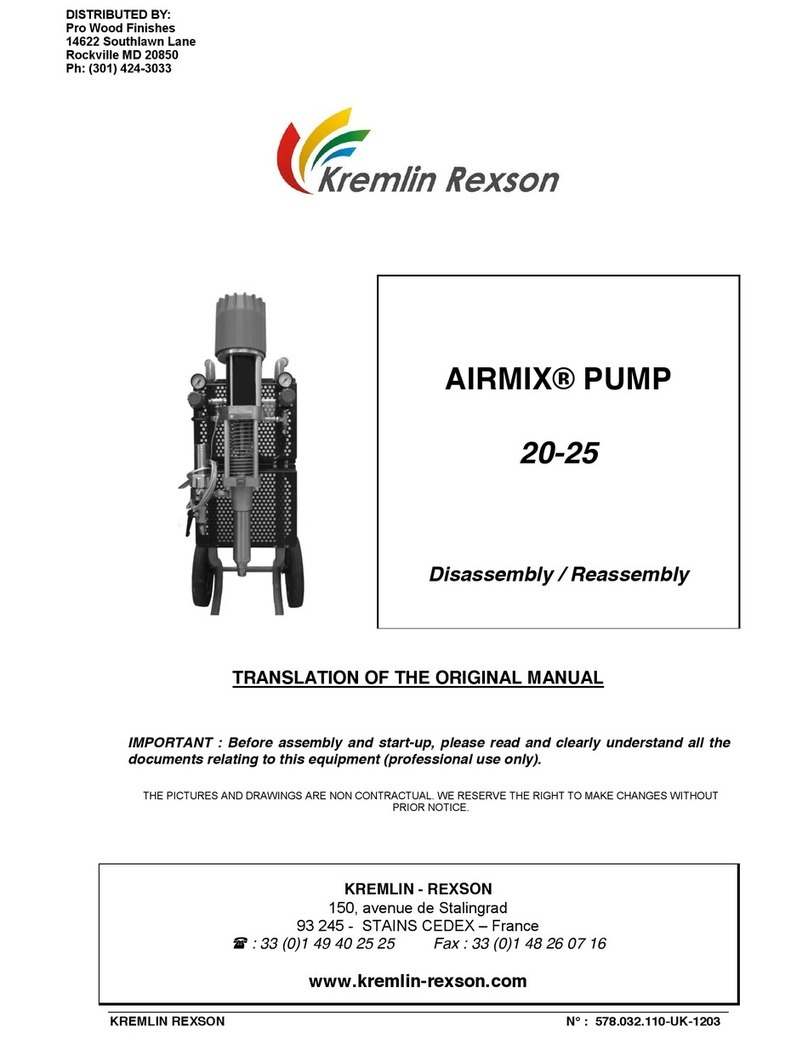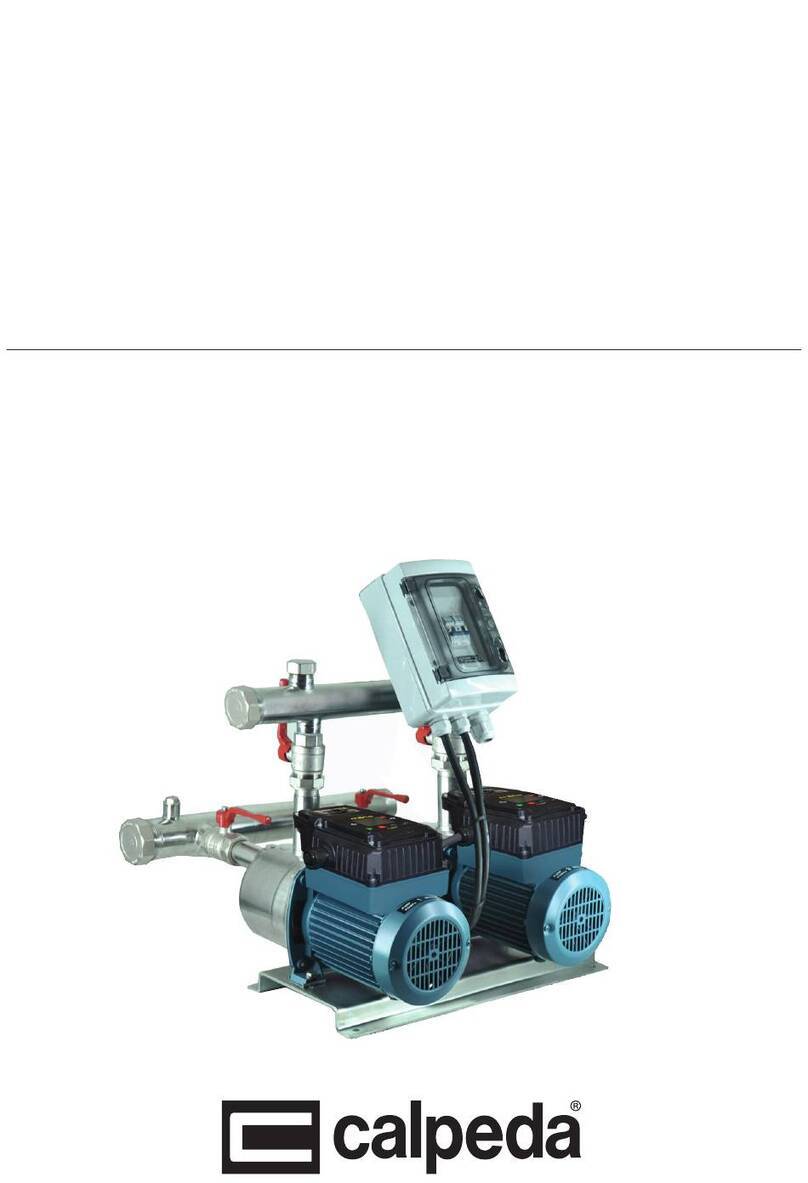
6
EN INSTRUCTION MANUAL
INSTALLATION
CHAPTER 3
7. Discharge
The length and diameter of the discharge hoses/pipes will affect the pressure and ow rate at which
your pump operates. Pressure ratings of all components must exceed the maximum pressure of the
pump by an appropriate safety factor. All pipework should be supported independently of the pump.
Connect the tting at the top of the pressure controller (1”BSP Male) to the household plumbing or
garden taps*.
*If you want to test that the pump is operating correctly prior to having the plumbing connected,
attach a hose with a trigger nozzle to the top of the pressure controller.
8. Pump Priming
Ensure that there is at least 200mm of water in your tank, (i.e. that the tank outlet is covered, and the
pump will not draw any air into the system). Open the gate valve on the tank. Check for any leaks, and
repair these if necessary.
If no leaks are present, remove the priming plug to open the priming port on the top of the pump case.
If the tank is above the level of the pump, water will start to run out of this port. Replace the priming
plug carefully. Your pump is now ready to run. (Note: If a check valve is installed in the suction line,
water may not ll the pump. If this occurs, follow the instructions below).
If the tank water level is below the level of the pump, you will need to ll the pump body and suction
line. Remove the priming plug and ll the pump body and suction line using a funnel.
9. Electical Installation
The pump is supplied with a interconnection appliance coupler and standard Australian 10 Ampere
plug and cord. Connection to the power supply is a matter of inserting the plug into the suitable
socket outlet. Before plugging the power supply cord into the socket outlet, connect the pump to it
using the provided IEC appliance connectors on the end of the interconnection cords. Ensuring there
are no water traces on the connectors push them rmly into each other to ensure intended splash
(water) proof protection. This connection shall be separated again only for service purpose and only
after the power supply is removed by unplugging the cord from the socket outlet.
The socket outlet shall be in a dry and ood free location; preferably do not use extension cords for
this very reason and because they can cause voltage drop.
Supply voltage outside limits specied in Model Data can cause motor
overheat leading to overload tripping, reduced component life or seriously
damage pump and voids warranty.
We recommend, for additional protection, the pump to be supplied from
socket outlet protected by a residual current device – RCD (also known as
an Earth Leakage Circuit breaker – ELCB) with a maximum rated residual
current of 30mA.
10
matter of inserting the plug into the suitable socket outlet. Before plugging
the power supply cord into the socket outlet, connect the pump to it using the
provided IEC appliance connectors on the end of the interconnection cords.
Ensuring there are no water traces on the connectors push them fi rmly into
each other to ensure intended splash (water) proof protection. This connection
shall be separated again only for service purpose and only after the power
supply is removed by unplugging the cord from the socket outlet.
The socket outlet shall be in a dry and fl ood free location; preferably do not
use extension cords for this very reason and because they can cause voltage
drop.
Supply voltage outside limits specified in Model
Data can cause motor overheat leading to overload
tripping, reduced component life or seriously
damage pump and voids warranty.
We recommend, for additional protection, the
pump to be supplied from socket outlet protected
by a residual current device – RCD (also known as
an Earth Leakage Circuit breaker – ELCB) with a
maximum rated residual current of 30mA.
WARNING
Hazardous voltage.
Can shock, burn, or
cause death.
Pentair ONGA_JS Series_Manual.indd 6 11/06/2019 10:00:51 AM















